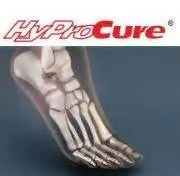Heel pain is one of the most common complaints a podiatrist hears about from patients. If you are dealing with heel pain above the heel bone then you could be dealing with Achilles Tendonitis, a result of overuse. The Achilles tendon is the longest tendon in the body and it serves to connect the muscles of the calf with the  lower leg and heel bone.
lower leg and heel bone.
While Achilles Tendonitis tends to occur most often in runners, this condition can still occur in athletes that play certain sports such as soccer or tennis. Unfortunately, this tendon does weaken as we get older, which makes at an increased risk for developing this overuse injury as we age.
What are the symptoms of Achilles Tendonitis?
The most obvious symptom of Achilles Tendonitis is pain above the heel bone. When the pain first appears it’s usually pretty mild and you may only notice it after running; however, over time you may notice that the pain gets worse after certain exercises. Along with pain you may also experience stiffness or tenderness in the heel, especially in the morning or after long periods of sitting.
When should I see a podiatrist?
If this is the first time that you’ve ever experienced heel pain then it’s a good idea to turn to a foot doctor who can determine whether Achilles Tendonitis is causing your symptoms or whether it’s something else. If you’re experiencing chronic heel pain around the Achilles tendon it’s also a good time to see a doctor. If the pain is severe or you are unable to put weight on your foot it’s possible that you might be dealing with a ruptured tendon, which requires immediate attention.
How do you treat Achilles Tendonitis?
In most cases, Achilles Tendonitis can be treated with simple self-care options. Unless symptoms are severe you may be able to treat your heel pain by:
- Taking over-the-counter pain medications
- Avoiding high-impact activities or activities that exacerbate symptoms
- Elevating the foot to reduce swelling
- Performing stretching exercises or undergoing physical therapy
- Icing the heel
- Wearing custom orthotics
- Replacing worn-out shoes, especially running shoes
Surgery is only necessary if your symptoms aren’t responding to any other nonsurgical treatment options after several months or if the tendon is torn.
If you think your heel pain could be the result of Achilles Tendonitis then it’s time to turn to a podiatrist as soon as possible. A podiatrist can provide you with a variety of treatment options, from simple lifestyle modifications to custom orthotics.













